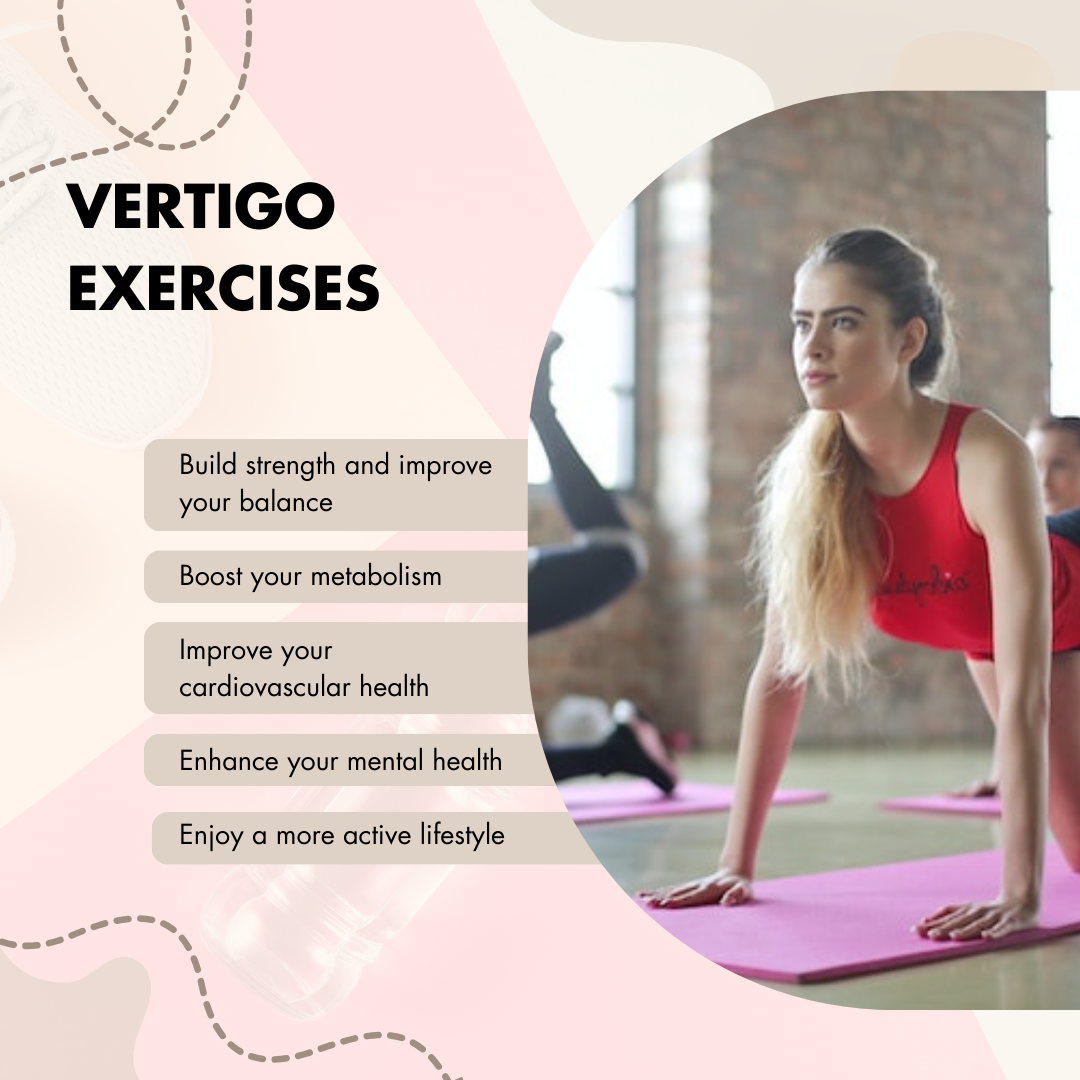Your shopping bag is empty
Vertigo Exercises
- Posted by: Enquiry Admin
- Comments: 0
- Categories: Health
- Tags:
Vertigo, characterized by a spinning sensation or a feeling of dizziness, can significantly impact an individual's daily life and well-being. While vertigo can stem from various underlying conditions, exercises tailored to address the symptoms play a pivotal role in managing and alleviating vertigo episodes. Incorporating specific movements and exercises, commonly referred to as "vertigo exercises" or vestibular rehabilitation exercises, can aid in enhancing balance, reducing dizziness, and fostering stability.
What are Vertigo Exercises?
Vestibular rehabilitation exercises are integral in managing vertigo, focusing on retraining the vestibular system to enhance balance and diminish dizziness. These exercises constitute a tailored series of movements and activities aimed at restoring stability, gaze control, and spatial orientation. By targeting the root cause of vertigo, these exercises aid in habituating the inner ear to movements that provoke dizziness. Hence, it will gradually help in reducing the intensity and frequency of vertigo episodes. Moreover, these routines aim to boost the brain's capacity to process vestibular signals efficiently. Therefore, it assists individuals in adapting to movements that would typically trigger vertigo symptoms. Through consistent practice, vestibular rehabilitation exercises strive to improve an individual's overall balance. Also, it reduces the disruptive impact of vertigo on their daily life.
The Epley Manuever
One of the well-recognized maneuvers within vestibular rehabilitation is the Epley Maneuver. This rehabilitation is specifically beneficial for individuals diagnosed with benign paroxysmal positional vertigo (BPPV). BPPV commonly arises due to displaced inner ear crystals, causing vertigo upon certain head movements. The Epley Maneuver is a Vertigo Exercise that involves a sequence of precise head and body maneuvers administered under the guidance of a healthcare professional. The objective is to reposition these dislodged crystals within the inner ear's semicircular canals to a less sensitive location. It thereby helps in alleviating vertigo symptoms. This maneuver has proven effective for many individuals experiencing BPPV. It provides relief by reestablishing the crystals' correct positioning and significantly reducing vertigo episodes.

By participating in vestibular rehabilitation exercises like the Epley Maneuver, individuals can experience substantial improvements in their vertigo symptoms. These exercises are personalized, considering the specific diagnosis and needs of the individual. Hence it allows for a targeted approach in addressing vestibular issues. The gradual and structured nature of these exercises emphasizes consistency and perseverance. This is because it aims for long-term symptom management and a better quality of life for those impacted by vertigo. Regular consultation with healthcare professionals or vestibular specialists is important. This is because it ensures proper guidance and optimization of these exercises to suit an individual's unique condition. Also it is important to forster an effective strategy in managing vertigo symptoms.
The Vestibular System
The vestibular system, an intricate sensory network within the inner ear, plays a fundamental role in maintaining balance, spatial orientation, and coordinating movement. The system comprises of the vestibular organs – the utricle, saccule, and three semicircular canals. This system detects and processes information related to the body's position and movement in space. Fluid-filled structures and sensory hair cells within these organs sense the direction and speed of head movements. In turn, it provides a vital feedback to the brain about balance and equilibrium. The vestibular system's ability to detect changes in head position and movement allows for the body's automatic adjustments to maintain stability, coordination, and posture. This contributes significantly to activities ranging from walking and running to more complex tasks like driving and maintaining balance in various positions. Dysfunction or impairment of the vestibular system can result in symptoms such as dizziness, vertigo, imbalance, and spatial disorientation. In fact, it can impact an individual's daily functioning and quality of life.
Types of Balance Exercises for Vertigo
Furthermore, balance exercises play a vital role in managing vertigo symptoms and minimizing the risk of falls. These exercises aim to enhance stability, improve proprioception, and increase confidence in movement. The Romberg Exercise, for instance, involves standing with feet together, arms crossed, and eyes closed for a period of time, challenging balance and stimulating the vestibular system. Incorporating Tai Chi, a mind-body practice combining gentle movements and meditation, has also shown promise in improving balance and reducing the frequency of vertigo episodes. Its emphasis on slow, controlled movements and mindfulness can aid in retraining the vestibular system while promoting overall well-being.
Other Considerations Such as Ideal Nutrition and Meditation
In addition to physical exercises, maintaining ideal nutrition and adopting holistic practices such as meditation and positive affirmations can complement vertigo management strategies. Ideal nutrition, emphasises on a balanced diet rich in vitamins and minerals. It supports overall health and may indirectly aid in managing vertigo symptoms. Practicing meditation techniques, including mindfulness and relaxation exercises, can help reduce stress and anxiety often associated with vertigo. In turn, it potentially contributes to a more stable and calm state of mind. Positive affirmations and mental resilience exercises can empower individuals to cope better with vertigo symptoms, fostering a positive mindset and enhancing the ability to navigate the challenges associated with this condition.
Conclusion on Vertigo Exercises
In conclusion, while vertigo exercises play a crucial role in managing symptoms and improving stability, a holistic approach encompassing ideal nutrition, mindfulness practices like meditation, and positive affirmations can complement exercise routines and contribute to overall well-being for individuals navigating the complexities of vertigo. As with any health-related regimen, it's crucial to consult with a healthcare professional or a physical therapist to determine the most suitable exercises and holistic strategies based on individual needs and the specific type of vertigo experienced.





